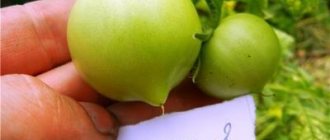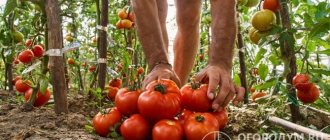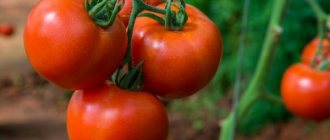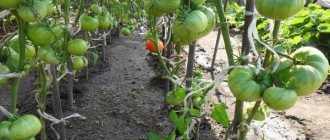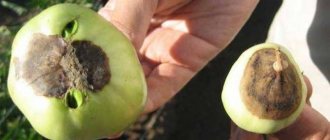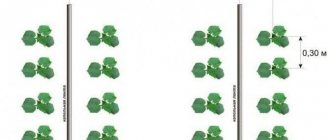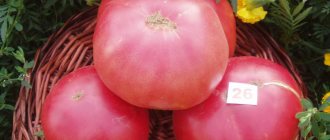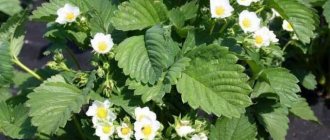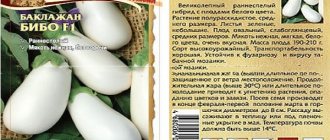Breeders gave the Honey-Sugar tomato a telling name: its pulp is truly distinguished by its incredible sweetness and tenderness. The variety is highly valued by lovers of delicious tomatoes.
| Height | Landing location | Ripening time | Fruit color | Fruit size | Origin | Fruit shape |
| Medium height | Greenhouse, Open ground | Mid-season | Orange | Large | Variety | Round |
Description of the variety
“Honey-sugar” is considered mid-season and ripens approximately 115 days after the first leaves appear on the seedlings. General description of the plant:
- Bush of average height 0.8 -1.4 meters;
- The leaves are simple. There are not many of them on the bush;
- Inflorescences are simple;
- The fruits are regular round in shape, smooth with a dense skin. The hallmark of the variety is the creamy-yellow color of the tomatoes. The average weight of the fruit is about 150 grams, but they can grow up to 300 grams. The tomatoes have an excellent honey-sugar taste, according to the name of the variety.
10 mistakes when growing tomatoes:
Tomatoes: advantages and disadvantages
These delicious Siberian tomatoes have advantages over other varieties:
- High yield;
- Good ability for transportation and long-term storage;
- The presence of immunity resistant to most diseases;
- Has a great aroma;
- The fruit has a wonderful taste;
- Adaptation to cold climates.
But “Honey-sweet” also has some disadvantages:
- Be sure to carry out pinching of bushes;
- Stem formation is a necessity;
- The bushes need to be tied to a support;
- It is recommended to plant no more than three plants per square meter.
Growing tomatoes
Let's take a closer look at growing this delicious variety.
How to prepare seeds?
Many people believe that there is no need to prepare purchased seeds for planting, but some seeds may still be unsuitable for propagation or infected with diseases. Therefore, it is recommended to carry out the following preparation of seed material:
- Selection of seeds for suitability. Empty and low-quality seeds usually float in a glass of salt water;
- Disinfection. Immerse the seeds in a disinfectant solution for 20 minutes;
- Treatment with bioactive substances to increase productivity. For example, take aloe juice and mix it with water 1:1. The seeds are placed in gauze and placed in the solution for 12 hours. Then, without washing, air dry.
Sowing seed material
To sow seeds, you need to prepare a shallow container with soil, pour the seeds into it, lightly sprinkle some soil on top and water. It is advisable to place the pot in a well-lit place.
IMPORTANT : Before the first shoots appear, it is recommended to cover the container with film with several holes (for air circulation). It needs to be removed when the first shoots appear.
Rules for planting seedlings
Planting seedlings of the “Honey-Sugar” variety is no different from planting other tomatoes. Arrange no more than three bushes in a checkerboard pattern (the distance between plants is 70 cm, and between rows is 40 cm).
IMPORTANT : Landing is done in a place well lit by the sun. If planted in the shade, the tomatoes will not taste as sweet.
Tomato Honey: reviews, photos, yield
The Honey Tomato can please with its fruits those gardeners who prefer tomatoes with large, fleshy and, at the same time, sweet fruits. Bred for Siberian climatic conditions, this variety can grow in all regions of Russia, surprising with its yield and taste.
Description of tomato
The Honey tomato is an indeterminate variety and is classified as medium-sized, growing up to 1.2 m. Having created the first ovary, it continues to grow. Therefore, you need to control its growth and form bushes. It is recommended to make bushes with 2 trunks, leaving a side trunk after the first brush. The rest should be removed by pinching.
In terms of ripening time, the Honey tomato is a mid-season vegetable. It takes 60-65 days to grow its seedlings, and it begins to produce its harvest in 105-110 days. Mature bushes have large, dark green leaves. The inflorescences are classified as simple.
Description of fruits
You can distinguish the Honey variety from other varieties by its fruit. Large, weighing from 300 to 400 g, flattened and slightly ribbed on the sides, the tomato stands out not only in size and shape, but also in its special color from dark pink to crimson.
The dense and juicy tomato pulp has 5-6 internal lobes with a small number of small seeds. The taste of the fruit is sweet without a sour sensation. A tomato grows sweeter the more sunlight it receives during ripening.
The largest fruits of the Honey variety are produced by the first cluster; they can be more than 500 g. Subsequent clusters produce smaller tomatoes. The stems may break under their weight.
Attention! To preserve the bushes and get a good harvest, you need to put up supports in time, tie up not only the stems, but also the brushes.
Characteristics of tomato
The Honey tomato variety was bred by Siberian breeders and included in the State Register of Breeding Achievements in 2007.
The variety has all the necessary qualities for growing it in Siberian climatic conditions, so it is not particularly picky about air temperature. It can be grown in all regions of Russia.
In the Northern regions, where there are few sunny summer days, it is recommended to grow it in greenhouses. In the Central and Southern regions with a warm climate and long summers, it thrives in open ground.
Productivity and fruiting
The Honey tomato variety is famous for its productivity. With proper care and compliance with all agricultural technology conditions, you can get from 3 to 4 kg of fruits from a bush. In the Northern regions, when growing Honey tomatoes in greenhouses, they get about 8 kg of vegetables per 1 sq. m. Some gardeners in the Southern regions talk about yields of 12 to 15 kg when planted in open ground.
The first tomatoes can be removed from the bush 105-110 days after planting the seedlings. The duration depends on the weather during the season. The warmer the summer, the earlier the tomatoes will ripen.
Area of application of fruits
The main use of tomatoes of this variety is fresh consumption, in salads, sauces, and for making tomato juice. Salads can be fresh or canned for the winter, for example, lecho.
Large tomatoes are almost impossible to use for pickling in jars - they do not fit through the neck. But they turn out great in barrels, they just need a little more time to salt.
Resistance to diseases and pests
When breeding the Honey variety, breeders achieved that the bushes are almost resistant to various fungal diseases and are well resistant to pests. Despite this, for prevention, experienced gardeners advise treating the bushes with appropriate fungicides before flowering.
Advantages and disadvantages of the variety
Tomatoes of the Honey variety have all the qualities for successful cultivation by both professionals and amateurs in all regions of Russia. Namely:
- tasty fleshy fruits are suitable for consumption fresh and canned;
- dense peel protects tomatoes from damage during long-term storage and transportation;
- prematurely picked unripe tomatoes can ripen in storage;
- bushes are practically not subject to fungal diseases;
- the plant tolerates sudden changes in temperature and humidity;
- the harvest can be more than 3 kg of tomatoes from one bush.
According to gardeners, the main disadvantage of the Honey tomato variety is that it is necessary to tie up the stems and brushes in time so that heavy tomatoes do not break them, and also to carry out pinching, thereby controlling the fertility of the tomatoes.
Growing rules
The basic rules for the Honey tomato variety are the same as for other tomatoes. But there are also some peculiarities that must be observed in order to get a rich harvest of tasty fruits.
Planting seedlings
The date for planting seeds of the Honey tomato variety for seedlings differs in different regions. It needs to be calculated based on the fact that there are 60-65 days left before planting in the ground and knowing the approximate date of planting at the main place.
If the soil for seedlings is taken from your own garden, then it is necessary to take into account the sequence of planting of crops and, for growing tomatoes, do not take the soil on which crops from the nightshade family had previously grown. Such soil is not suitable for seedlings of the Honey variety. Planting of seedlings is carried out according to the following scheme:
- Treat the seeds with a disinfectant and growth stimulator. If the package says that the seeds are already prepared, then there is no need to process them.
- Pour the soil mixture into a wooden or plastic box, moisten and heat it. Ready-made soil for nightshade crops can be bought in the store.
- Place the seeds into the soil to a depth of 1 cm at a distance of 1.5-2 cm from each other.
- Water the tomatoes periodically without overwatering the soil.
- When the sprouts sprout, place the box on the windowsill so that there is light and at the same time some coolness from the window.
The optimal temperature for seedlings is +220C during the day and a couple of degrees lower at night.
You should not feed the seedlings before picking. A week after the first 2 leaves sprout, according to gardeners, it is necessary to pick the Honey tomato variety, as in the photo.
For this:
- Prepare cups or pots.
- Pour fertile soil and lightly water it with warm water.
- Select the strongest stems, carefully separate them with a special spatula and plant them in a glass.
- Place the cups in the shade for 3 days.
- Start feeding after 7-10 days.
Advice! You don’t have to pick, but when planting seedlings, you should leave a distance of at least 8 cm between the seeds.
Tomato transplant
Transplantation of seedlings of the Honey tomato variety should be carried out after 60-65 days, provided that the night temperature does not fall below +150C.
First you need to prepare the soil. To do this, mix the soil with compost, fertilizers or humus. It is also advisable to add wood ash. If the soil into which the Honey tomato variety seedlings are transplanted is worse than the one in which it grew, then the plant may stop its growth.
Seating should be done according to the following scheme: per 1 sq. m 3-4 tomato bushes. It is recommended to immediately install supports in order to carry out tying in time.
Subsequent care for tomatoes
For the successful growth of the Honey tomato variety you need:
- water the bushes 2 times a week until fruiting, then watering should be increased;
- provide good lighting throughout the day and temperatures in the range from +150C to +300C;
- periodically fertilize with complex fertilizers;
- mulch the soil to a height of about 10 cm;
- do stepsoning every week;
- Tie the stems and brushes in time.
When the tomatoes have already reached the desired height, the leaves around them should be removed to allow more light. Also, some gardeners prune the tops and remove inflorescences that no longer have time to produce the desired fruit. In the Southern regions this is carried out at the beginning of August, in the Northern regions - at the end of August.
Advice! Phosphorus-potassium fertilizers will be a good fertilizer at the growth stage. After the ovary, it is recommended to replace them with complex ones.
Pest and disease control
In addition to preventive treatment of bushes, if the fungus has already appeared on the leaves, you need to use drugs such as “Quadris”, “Skor”, “Topaz” and similar ones according to the instructions.
When insects appear, it is necessary to apply insecticides:
- "Engio";
- "Ampligo 150";
- "Mospilan";
- "Calypso" and others.
In addition, if the Honey tomato variety is grown in greenhouses, a favorable watering and ventilation regime should be created in order to eliminate the appearance of pests as much as possible.
Conclusion
The Honey tomato does not require special knowledge and experience for the average amateur to grow it in his garden or greenhouse. It is only necessary to carry out pinching and tying up bushes in a timely manner. Otherwise, caring for the Honey variety is the same as for all tomatoes. And the harvest gives you the opportunity to be proud of the work put into it.
Reviews
Svetlana Vitalievna Osipova, 64, Omsk I immediately see our Siberian tomato. I already know this variety. One of my family's favorites. True, I have never tried it for pickling. I didn't have time. The entire harvest was eaten fresh. This is also because the tomatoes picked at home ripened gradually and were immediately used for salad. Grown in a greenhouse. I recommend. Only when pinching, you need to independently determine how best to trim off the excess so that all the tomatoes have enough nutrition. Andrey Yuryevich Klimov, 58 years old, Astrakhan The size is impressive and I liked the taste. But in our hot climate, the fuss with garters and trimmings is not worth it. I think that for those of my fellow countrymen who love experiments and are constantly at the dacha, this is an interesting find. And in terms of taste, some people love tomatoes for their sourness, which cannot be said about Honey. Oleg Vasilyevich Malyshev, 51, Izhevsk At the first ovary, the fruits, indeed, came out large, but did not reach 400 g. The next ones were smaller. True, almost all are the same. They turned out to be not as juicy as expected. I think there is also a question of watering. In my case, it was necessary to give more water, and feeding would not hurt, preferably natural. This is good work by breeders for Siberia.
Source: https://AgroGnom.ru/vegetables/tomatoes/tomat-medovyj-opisanie-otzyvy.html
Bush care
The care rules are not too complicated, but it is important to adhere to them in order to get a full harvest. Tomatoes need:
- Regular watering with warm water (at least once every 5 days). If you water with cold water, you can provoke the appearance of putrefactive diseases;
- Mandatory removal of weeds that take nutrients from the ground to the detriment of tomatoes;
- Loosening the soil to increase breathability;
- Feeding bushes with fertilizers. The procedure is carried out 3-4 times with a difference of 2 weeks from the moment of disembarkation in a permanent place;
- Stepsonning;
- Tying bushes to a support.
Preparing seedlings and planting
To get a good harvest, it is better to plant tomatoes in seedlings. If you follow the recommendations, there will be no difficulties with the plant:
- preparatory work begins two months before the expected landing date;
- Seeds should be planted at a depth of 1.5-2 cm;
- Separate peat pots are suitable for seedlings;
- it is necessary to maintain the room temperature at least 23 degrees;
- to improve germination, it is recommended to use a growth stimulator;
- love abundant watering;
- growth requires a constant source of light.
Important! When planting in the ground or greenhouse, do not place the seedlings close to each other. For 1 sq.
m there should not be more than three bushes.
The plant requires mandatory pinching. For best results, the bush should be formed into one stem.
